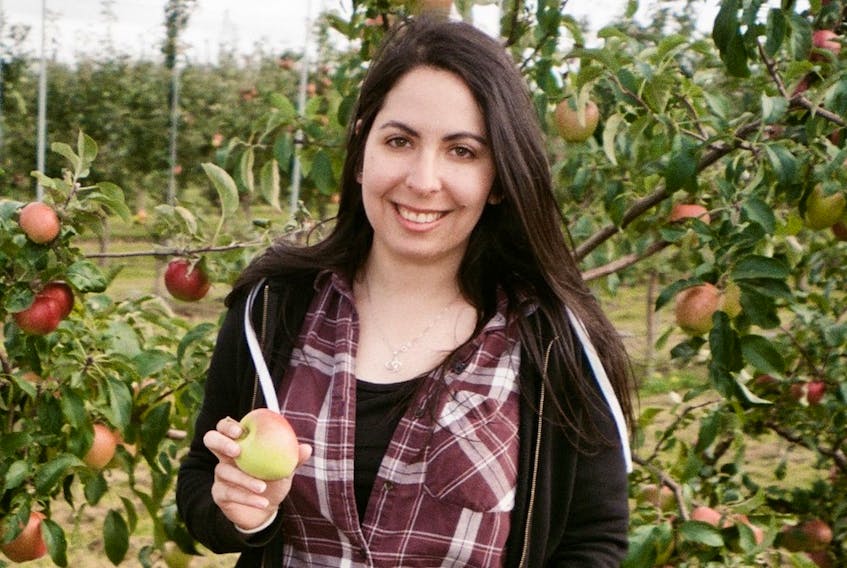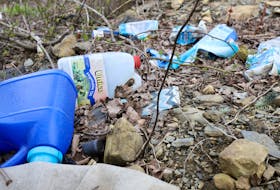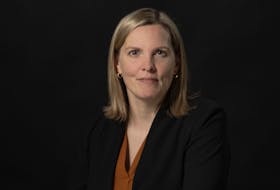When a Dalhousie University researcher's team dug their teeth into genetics of apple trees, they found that we are not using the full potential of the fruit's diversity.
Zoe Migicovsky, a postdoctoral fellow from Dalhousie University’s Faculty of Agriculture and lead author of the study, said it was done in collaboration with the U.S. Department of Agriculture.
“They have a germplasm collection, which is basically a collection of living plants (and) apple trees,,” Migicovksy said in a telephone interview on Friday. “Because, with apple trees, unlike with some annual crops, you can't just store the seeds, you have to actually grow the tree and keep the living trees around.”
That's because of the way they are bred. If you want to grow a McIntosh apple, you take a cutting from another MacIntosh tree rather than planting seeds, because apple trees don't “breed true,” Migicovsky said.
“If you take a seed from an apple off a tree, one of the parents is the tree that you got the fruit off of, but the other parent is another tree. And so, if you took an apple off a MacIntosh and planted the seeds, the trees you got would only be 50 per cent Mac and it might be 50 per cent something that is not tasty at all. And so if we want to maintain and preserve those trees, than we have to actually keep living copies.”
There is also a germplasm collection at the Agriculture and Agri-Food Canada research station in Kentville, she said.
Migicovksy, who studied apples for her PhD at Dalhousie with Sean Myles, said for this study they took leaf samples from apple tree varieties commonly used for grocery store produce like honeycrisp, MacInstosh and red delicious. They also took samples from some of the wild species related to the domesticated apples.
The DNA samples gained were used for the study, which was just published in Horticulture Research, to help understand what changes have happened in a genome as a result of breeding and improvement and also how those different apples are related to each other.
“As you can imagine, if a particular apple variety is really popular, then breeders tend to use that same variety again and again in breeding,” Migicovsky said.
The research found that some of the most popular applies in the world, like golden delicious and red delicious, are used over and over again.
“So, there's a lot of other diversity out there that we're not making use of when we use the same few parents in breeding again,” she said.
“If we keep using red delicious and golden delicious again and again, then you can imagine if … there was a pest or a pathogen that golden delicious was vulnerable to, then it's possible – I mean, it depends on what the other parent is, but it's possible – that many of … the apples that we've bred using golden delicious, will also be susceptible to that disease. So using the same few parents repeatedly increase that risk, as opposed to making use of more diversity and having different parents.”

One thing of further interest for Nova Scotians is that they found the popular honeycrisp variety is not part of that same interconnected relationship mix.
“And the reason for that is actually a mistake,” Migicovsky said. “Both parents that were recorded for honeycrisp in the breeding program were wrong.
“They thought they were using two different apple trees and that's what they had recorded, but it turns out that … scientists have been able to identify who the actual parents were of honeycrisp and both of them are wrong.”
The actual parents are a cultivar called keepsake and one designated as MN1627, which was an offspring of golden delicious from the University of Minnesota that is no longer available.
“So that shows you that yes, it makes sense that people want to use the same cultivars again and again in breeding because they are known to be successful, but they aren't the only ones that are successful. I think in a lot of ways, it's pretty obvious when you taste an apple like honeycrisp compared to a lot of the other apples at the grocery store, it's really offering you something that's different and unique.”
Migicovsky said that really emphasizes the amazing apple diversity that is out there beyond the top 10 cultivars that are available.
“For us, I think that really emphasizes the fact that there is some amazing apple diversity out there and it's not held only within the top 10 apple cultivars that are available, and so not only does that give us the opportunity to breed apples that have varying levels of resistance to different pests and pathogens but also gives the opportunity to help make something unique and interesting available at the grocery store that we didn't see before like with honeycrisp and its unusual crunchy texture," she said.
“There are other apples out there that have all kinds of weird and wonderful traits that we can also make use of. So that's something that our research has found again and again in this study but also in other work that we have collaborated on, as well.”









